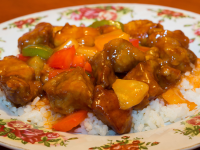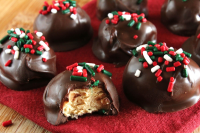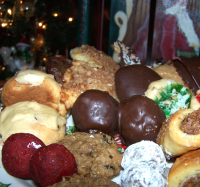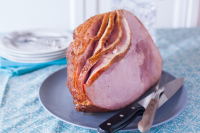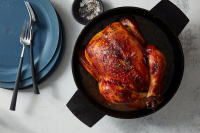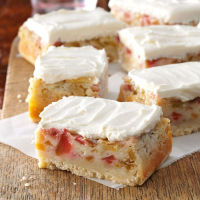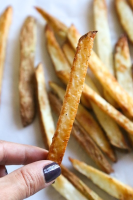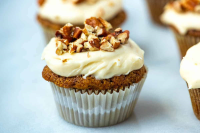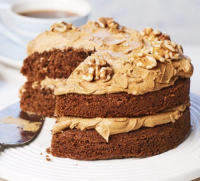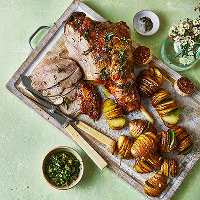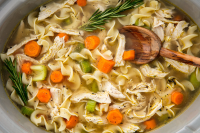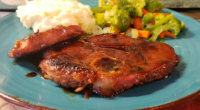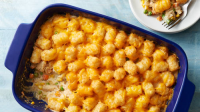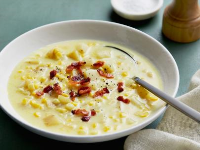THE STAGES OF MAKING CANDY | JUST A PINCH RECIPES
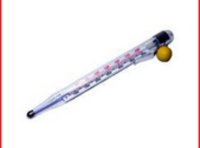
When making candy this holiday season it's always nice to have a candy thermometer but if you don't have one , These are very good steps to determine your cold water candy testing for your candy making this year.
Provided by Karla Everett @Karla59
Categories Candies
Number Of Ingredients 1
Steps:
- If you don’t have a candy thermometer, you can still make candy from sugar syrups by using the cold-water method. During the cooking stage, remove your pan from the heat and drop a small spoonful of sugar syrup into a bowl of very cold water. Immerse your hand in the cold water, try to form the sugar into a ball, and bring it out of the water. By examining the shape and texture of the resulting candy blob, you can determine the approximate temperature of your sugar. This method takes a little practice, and is not as exact as a candy thermometer, but it will do in a pinch!
- As a sugar syrup is cooked, water boils away, the sugar concentration increases, and the temperature rises. The highest temperature that the sugar syrup reaches tells you what the syrup will be like when it cools. In fact, that’s how each of the temperature stages discussed below is named.
- Thread Stage: 223-235° sugar concentration: 80% The earliest candy temperature stage is Thread Stage. At this temperature, the syrup drips from a spoon and forms thin threads in cold water.
- Soft Ball Stage: 235-245° sugar concentration: 85% The syrup easily forms a ball while in the cold water, but flattens once removed from the water. Fudge, pralines, and fondant are made by cooking ingredients to the soft-ball stage.
- Firm Ball Stage: 245-250° sugar concentration: 87% The syrup is formed into a stable ball, but loses its round shape once pressed. Caramels are cooked to the firm-ball stage.
- Hard Ball Stage: 250-266° sugar concentration: 92% The syrup holds its ball shape and deforms only slightly with very firm pressure, but remains sticky. Nougat, marshmallows, gummies, divinity, and rock candy are cooked to the hard-ball stage.
- Soft Crack Stage: 270-290° sugar concentration: 95% The syrup will form firm but pliable threads when removed from the water. Many different recipes require cooking candy to soft-crack stage, commonly including toffees, brittles, and butterscotch. Often, candies that are cooked to soft-crack stage feature a caramelized sugar flavor and a hard, pleasingly crunchy texture. Saltwater taffy and butterscotch are cooked to the soft-crack stage.
- Hard Crack Stage: 300-310° Sugar concentration: 99% The syrup will form brittle threads in the water, and will crack if you try to mold it. Toffee, nut brittles, and lollipops are all cooked to the hard-crack stage.
- Caramel Stage: 320-350° sugar concentration: 100% The sugar syrup will turn golden at this stage. Honey color produces a light caramel, while amber is a darker, fuller caramel. Anything darker than amber will result in a slightly burnt taste.
- Caramelizing Sugar: If you heat a sugar syrup to temperatures higher than any of the candy stages, you will be on your way to creating caramelized sugar (the brown liquid stage)—a rich addition to many desserts.
- Clear-Liquid Stage : 320° F sugar concentration: 100% At this temperature all the water has boiled away. The remaining sugar is liquid and light amber in color.
- Brown-Liquid Stage 338° F sugar concentration: 100% Now the liquefied sugar turns brown in color due to carmelization. The sugar is beginning to break down and form many complex compounds that contribute to a richer flavor. Caramelized sugar is used for dessert decorations and can also be used to give a candy coating to nuts.
- Burnt-Sugar Stage 350° F sugar concentration: 100% Watch out! Above about 350° F, the sugar begins to burn and develops a bitter, burnt taste.
- A candy thermometer is always the best way to go when making homemade candies so when purchasing a candy thermometer, look for one with a clear readout and an adjustable clip so it can be attached to the side of a pan. To use the thermometer, stand it upright in the candy syrup so the bulb is completely immersed in the liquid. Do not let the bulb touch the bottom of the pan. Clip it in place.
- Candy thermometers are the most accurate way of determining the temperature of boiling syrup. Always attach the thermometer to the side of the pan after washing down sugar crystals. Make sure that the thermometer does not touch the bottom of the pan. Read the thermometer at eye level. Verify the accuracy of a candy thermometer by checking its reading in boiling water. Water normally boils at 212°F at sea level. If your thermometer does not read 212°F, either you do not live at sea level or your thermometer is not accurate. (Water always boils at a lower temperature above sea level because there is less air pressure.) To adjust the temperature given on a recipe, add or subtract the difference from 212°F as needed. For example, if your thermometer reads 210°F in boiling water and the recipe temperature is 240°F, cook the candy to 238°F, or 2°F less than the temperature stated in the recipe.
CHRISTMAS HARD CANDY RECIPE: HOW TO MAKE IT
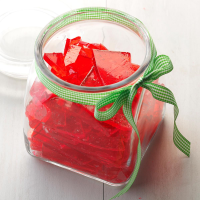
When you make a batch of this beautiful jewel-toned candy, your whole house fills with the wonderful scent of mint or cinnamon. My mom always makes this candy, and people request it every year. She puts it in clear jars with a holiday calico fabric on the lid. Now I've started making it, too.—Jane Holman, Moultrie, Georgi
Provided by Taste of Home
Categories Desserts
Total Time 01 hours 05 minutes
Prep Time 5 minutes
Cook Time 60 minutes
Yield about 2 pounds.
Number Of Ingredients 5
Steps:
- In a large heavy saucepan, combine sugar, corn syrup and water. Cook on medium-high heat until candy thermometer reads 300° (hard-crack stage), stirring occasionally. Remove from the heat; stir in oil and food coloring, keeping face away from mixture as the scent of the oil is very strong. , Immediately pour onto an oiled baking sheet. Cool; break into pieces. Store in airtight containers.
Nutrition Facts : Calories 114 calories, FatContent 0 fat (0 saturated fat), CholesterolContent 0 cholesterol, SodiumContent 13mg sodium, CarbohydrateContent 30g carbohydrate (26g sugars, FiberContent 0 fiber), ProteinContent 0 protein.
HARD CRACK STAGE IN CANDY MAKING - THE SPRUCE EATS
Nov 14, 2019 · Hard-Crack Stage . Hard-crack stage occurs at 300 to 310 F. If you don't have a candy thermometer, you can use the cold water test in a pinch: Drop a spoonful of hot syrup into cold water, then remove the candy from the water and attempt to bend it. If your syrup has reached the hard-crack stage, it will form brittle strands in the water and crack as you bend it.
From thespruceeats.com
From thespruceeats.com
See details
HARD-CRACK STAGE - COOKSINFO
Jun 27, 2004 · The Hard-Crack Stage is called for in recipes for crunchy candies such as peanut brittle, barley sugar, etc. The stages of cooking sugar syrup are: 1. Thread Stage (106 – 112 C) 2. Soft-Ball Stage (112 – 116 C) 3. Firm-Ball Stage (118 – 121 C) 4. Hard-Ball Stage (121 – 130 C) 5. Soft-Crack Stage (132 – 143 C) 6. Hard-Crack Stage (149 – 154 C)
From cooksinfo.com
From cooksinfo.com
See details
SOFT-CRACK STAGE IN SUGAR SYRUP COOKING
Oct 30, 2019 · Hard Crack Stage: 300 to 310 F Caramel Stage: 320 to 350 F Some candy cooking instructions fall into the crack between soft crack and hard crack, such as butterscotch which is cooked to between 290 and 300 F, and brittles which are cooked to between 295 and 300 F.
From thespruceeats.com
From thespruceeats.com
See details
SCIENCE OF COOKING: CANDY-MAKING STAGES | EXPLORATORIUM
Saltwater taffy and butterscotch are cooked to the soft-crack stage. MP4. 5. Hard-Crack Stage. 300° F–310° F. Sugar concentration: 99%. The hard-crack stage is the highest temperature you are likely to see specified in a candy recipe. At these temperatures, there is almost no water left in the syrup.
From exploratorium.edu
From exploratorium.edu
See details
HOW CAN I TELL IF I HAVE A HARD CRACK STAGE WITHOUT A ...
Nov 27, 2021 · The temperature needs to reach between 300 and 310 degrees F. to actually get to the hard crack stage. How long does glass candy take to harden? Another way to tell is to drop a spoonful of it into a bowl with ice-cold water.
From foodmorning.fr
From foodmorning.fr
See details
WHAT IS THE HARD CRACK STAGE? (WITH PICTURES)
Hard crack may be used for nut brittles. On a candy thermometer, hard crack stage is defined as between 300-310 degrees F (148.89-154.44 degrees C). It is highly recommended that you use a candy thermometer to reach this stage, since you can easily miss it by a few degrees and produce candy in soft crack stage, or you may caramelize or burn ...
From delightedcooking.com
From delightedcooking.com
See details
HOW TO TEST STAGES OF SUGAR - RECIPES - HOW TO COOKING TIPS
Hard Crack 300°F – 310°F / 150°C – 155°C. Drop a teaspoon of syrup into cold water. At the hard crack stage the syrup will have darkened in color and when dropped in the cold water, it separates into hard brittle threads. When the threads are removed from the water they cannot be bent without breaking.
From recipetips.com
From recipetips.com
See details
CANDY - SUGAR SYRUP TEMPERATURE CHART | CRAFTYBAKING ...
Soft-Crack Stage 270° F–290° F /132° C–143° C sugar concentration: 95%: Taffy, Butterscotch, Candy apples: Soft Crack: As the syrup reached soft-crack stage, the bubbles on top will become smaller, thicker, and closer together. At this stage, the moisture content is low. Syrup dropped into ice water separates into hard but pliable threads.
From craftybaking.com
From craftybaking.com
See details
HOW CAN I TELL IF I HAVE A HARD CRACK STAGE WITHOUT A ...
Nov 27, 2021 · The temperature needs to reach between 300 and 310 degrees F. to actually get to the hard crack stage. How long does glass candy take to harden? Another way to tell is to drop a spoonful of it into a bowl with ice-cold water.
From foodmorning.fr
From foodmorning.fr
See details
HOW TO TEST STAGES OF SUGAR - RECIPES - HOW TO COOKING TIPS
Hard Crack 300°F – 310°F / 150°C – 155°C. Drop a teaspoon of syrup into cold water. At the hard crack stage the syrup will have darkened in color and when dropped in the cold water, it separates into hard brittle threads. When the threads are removed from the water they cannot be bent without breaking.
From recipetips.com
From recipetips.com
See details
HOW LONG DOES IT TAKE FOR CANDY APPLES TO DRY? - BROKEN BARREL
Dec 19, 2021 · about 10 minutes. How long does it take for candy apples to harden? Candy apples usually harden about 10 minutes after dipping. Why didn’t my candy apples Harden? If your candy apples are not getting to the crackling stage it is because you are not getting your candy mixture hot enough. I assume you are … How Long Does It Take For Candy Apples To Dry? Read More »
From brokenbarrelwoodlands.com
From brokenbarrelwoodlands.com
See details
ENGLISH TOFFEE: TEMPS FOR FLAVOR AND TEXTURE | THERMOWORKS
Toffee is a hard candy made by cooking a sugar syrup with butter to the hard crack stage, 300–310°F (149–154°C), and then pouring it out to cool. It can have inclusions or not, and it can be made either very dense and hard or can be lightened by adding baking soda when the candy is almost done cooking .
From blog.thermoworks.com
From blog.thermoworks.com
See details
HOW LONG DOES IT TAKE FOR SUGAR TO GET TO THE HARD BALL STAGE?
It's not a question of "how long" as much as it's a question of "how hot." Sugar reaches the so-called hard ball stage somewhere between 250 and 265 degrees F. How long it will take your sugar to reach that temperature depends on a number of variables including the power of your cooking range and the type of vessel the sugar is being cooked in.
From cooking.stackexchange.com
From cooking.stackexchange.com
See details
AUNT MARCEY’S OLD FASHIONED HARD TACK CANDY – WENDERLY
Dec 20, 2011 · The problem is that you have not cooked the candy long enough for it to get to the *hard tack* or *hard crack* stage. You want the candy thermometer to reach 300 degrees and then a good way to test it is, spoon a drop of syrup into cold water and if it makes hard, brittle threads it is ready!
From wenderly.com
From wenderly.com
See details
7 TIPS FOR HARD CANDY MAKING SUCCESS | LORANN OILS
4. Get it Down to a Science. The process of turning sugar into a hard, smooth, transparent confection involves heating a sugar/corn syrup/water solution to 300 – 310° F. {150 - 155° C.}, or what is known as the hard crack stage of sugar. The use of a candy thermometer is not essential, but highly recommended and accuracy is critical.
From lorannoils.com
From lorannoils.com
See details
HOW TO MAKE TAFFY . . .THAT TURNS INTO HARD CANDY, OR FINE ...
The temperature previously was slowly going up like 50 degrees every 20 minutes and after I cranked the heat it immediately jumped over the soft-crack stage which is 270 degrees. I am sure that over the soft-crack stage is too high for taffy if you want it to be soft.
From instructables.com
From instructables.com
See details
SOFT-BALL STAGE - COOKSINFO
Jun 27, 2004 · The Soft-Ball Stage is called for in recipes for fudge, fondant, pralines, peppermint creams, Italian meringue, buttercreams, etc. The stages of cooking sugar syrup are: 1. Thread Stage (106 – 112 C) 2. Soft-Ball Stage (112 – 116 C) 3. Firm-Ball Stage (118 – 121 C) 4. Hard-Ball Stage (121 – 130 C) 5. Soft-Crack Stage (132 – 143 C) 6.
From cooksinfo.com
From cooksinfo.com
See details
HARD TACK CANDY {VINTAGE CANDY RECIPE} | TASTES OF LIZZY T
Nov 20, 2020 · Make sure it hits at least 290º, but up to 295º is ok. Remove the sugar from the heat and stir in the flavored oil. Immediately pour the hot sugar on the prepared pan. Make sure you don't have a super thick layer or it will be hard to crack apart. Allow the mixture to cool completely (this will take about 30 minutes).
From tastesoflizzyt.com
From tastesoflizzyt.com
See details
TANGHULU - CHARMING BAKER
Jan 26, 2020 · The most crucial portion of this particular recipe is ensuring you allow the sugar syrup mixture to reach the hard crack stage in candy making or 300 degrees Fahrenheit. This is the stage where you cook the sugar until it retains very little water. By doing so once the sugar mixture cools it hardens and becomes brittle.
From acharmingbaker.com
From acharmingbaker.com
See details
COOKING AND TESTING CANDY MIXTURES | BETTER HOMES & GARDENS
Jun 09, 2015 · Hard-ball stage (250 to 266 degrees F): When the ball of candy is removed from the cold water, it can be deformed by pressure, but it doesn't flatten until pressed. Soft-crack stage (270 to 290 degrees F): When dropped into the cold water, the candy separates into hard, but pliable and elastic, threads.
From bhg.com
From bhg.com
See details
HARD-BALL STAGE - COOKSINFO
Jun 27, 2004 · Hard-Ball Stage is a cooking term meaning that a sugar syrup being heated has reached 121 – 130 C (250 – 266 F.) It is a test of how hot a sugar syrup is, and of how much water is left in it. At this point of heating, the sugar concentration in the syrup is 92%.
From cooksinfo.com
From cooksinfo.com
See details














